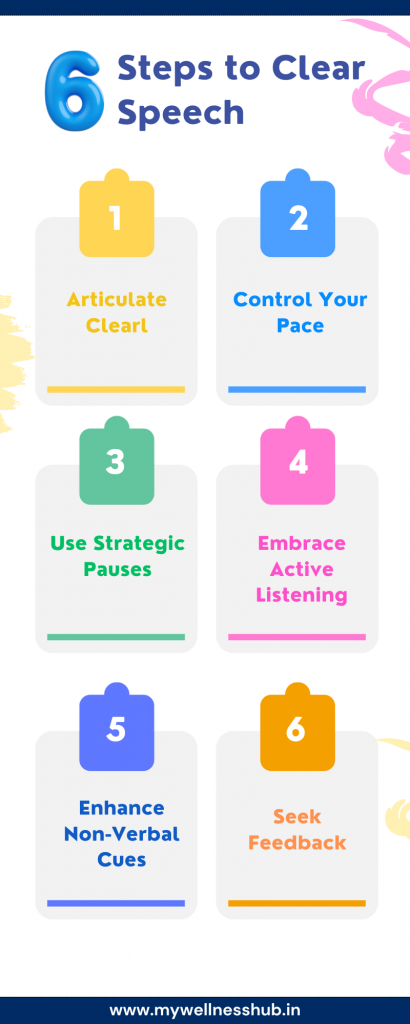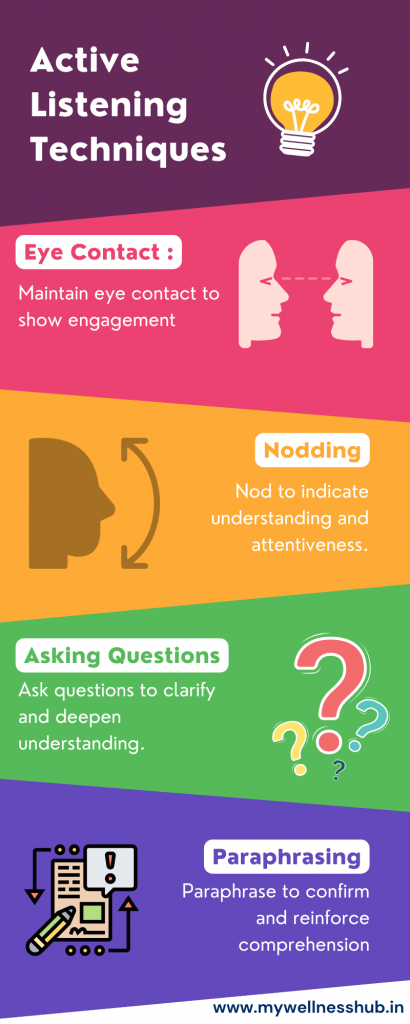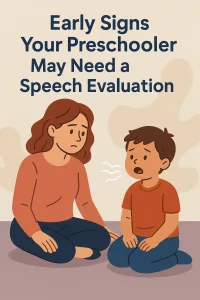6 Easy Steps to Improve Your Child’s Speech Clarity Today
Last Updated: August 24, 2024
Have you ever found yourself struggling to get your point across, whether it’s during a team meeting or in a casual conversation with friends? Clear speech isn’t just about choosing the right words; it’s about making lasting connections and exuding confidence in every interaction. Whether you’re pitching an idea at work or chatting at a social event, the clarity of your speech directly influences how others perceive and respond to you. In both personal and professional settings, the ability to communicate clearly can bridge gaps and build stronger relationships. It’s not just about making yourself understood—it’s about understanding others and fostering an environment where ideas flow freely and confidently. Think about it: when you speak clearly, you’re more likely to captivate your audience, drive your points home, and leave a memorable impression.

Articulate Clearly
Why Clear Articulation Matters
Clear articulation is the cornerstone of effective communication. It’s about making each word you say understandable and distinct, which prevents misunderstandings and ensures your message is delivered as intended. Imagine giving a presentation or sharing an idea—if your articulation is muddled, your message loses its impact. On the other hand, crisp and clear articulation can captivate your audience, making your speech more persuasive and your interactions more engaging.
Read More: Speak Clearly and Learn: Master Articulation Skills
Actionable Tips to Improve Articulation
- Practice with Tongue Twisters: Tongue twisters are a fun and effective way to sharpen your pronunciation skills. They challenge you to articulate complex combinations of sounds, which can help improve your clarity when speaking normally. Try starting your day with a few rounds of tongue twisters like “Peter Piper picked a peck of pickled peppers” or “She sells seashells by the seashore.” Notice the improvement as these playful phrases make you more aware of how you pronounce each syllable.
- Slow Down Your Speech: Rushing through your words can blur your speech, making it hard for listeners to catch every word. Slowing down allows you to focus on articulating each sound clearly. Next time you speak, consciously take your time with each word, especially in key conversations or presentations. This doesn’t mean speaking at a snail’s pace but finding a comfortable speed where your articulation remains clear.
- Record and Playback: Use your smartphone or a digital recorder to capture your speech, then listen back. Hearing yourself can reveal a lot about your articulation habits. Pay attention to the clarity of your consonants and whether you’re slurring similar sounds together. Regular practice with this technique can lead to significant improvements in how clearly you express yourself.
Control Your Pace
The Impact of Your Speaking Pace
Just like driving at the right speed ensures a smooth journey, controlling the pace of your speech ensures clarity and retains your listener’s interest. Speaking too quickly can overwhelm your audience, causing them to miss key points, while speaking too slowly might lead them to disengage or lose interest. Finding that sweet spot in your speech pace makes your message more effective and enhances the listener’s experience.
Strategies to Find and Maintain a Comfortable Speaking Pace
- Record and Assess: One of the most effective ways to gauge your speaking pace is to record yourself. This allows you to hear exactly how you sound and adjust accordingly. Use a simple recording tool on your phone or computer, read a passage, and play it back. Listen for parts where you might be speaking too fast or too slow and make a note to modify your pace in these areas.
- Use Punctuation as a Guide: When practicing your speech or during actual conversations, use punctuation marks as natural pause points. Commas, periods, and question marks are visual cues to take a brief pause, helping you to naturally moderate your pace.
- Practice with a Timer: Set a timer for a fixed interval and practice speaking a piece of text within that time frame. This will help you get a feel for how much content you can comfortably cover within a given time and adjust your pace accordingly.
- Feedback from Peers: Sometimes, it’s hard to gauge our own pace accurately. Ask a friend or a colleague to listen to your speech and provide feedback on your pace. Are you going too fast to be understood clearly? Or perhaps too slow, causing their mind to wander? This direct feedback can be incredibly helpful.
Strategic Pausing
Unlocking the Power of Pauses
Pauses are one of the most potent tools in your speaking arsenal, yet they’re often underutilized. Strategic pausing can significantly enhance the impact of your speech, giving your audience crucial moments to absorb and reflect on the information you’ve shared. This technique not only emphasizes your points but also helps control the pace of your communication, making your message more digestible.
How to Use Pauses Effectively
- Pause for Emphasis: Just before you deliver a key point, insert a brief pause. This signals to your audience that something important is coming up. It’s like using a highlighter in a book—it makes your listeners perk up and pay close attention.
- Pause After Important Points: Just as important as pausing before a key point is pausing right after delivering one. This gives your audience time to process the information and connect it with what was said previously. Think of it as giving your words time to “land.”
- Pause to Engage: During a presentation or a conversation, strategic pauses can invite interaction. For example, after posing a question, pause and give people a chance to think or respond. This not only makes your session more interactive but also encourages deeper engagement with your content.
- Pause to Regain Composure: If you ever find yourself losing track or getting nervous, use a pause. It’s a moment for you to take a breath, gather your thoughts, and continue with greater clarity and confidence.
Embrace Active Listening

Why Active Listening Enhances Your Speech Clarity
Active listening is much more than just hearing the words that are spoken. It involves fully engaging with the speaker, understanding their message, processing it, and responding thoughtfully. By practicing active listening, you not only gain better insights into what is being communicated, but you also improve your own speech clarity. This reciprocal understanding makes conversations more productive and meaningful, as you’re able to tailor your responses more effectively to suit the context and needs of your audience.
Techniques to Improve Your Active Listening Skills
- Maintain Eye Contact: Eye contact is a powerful tool in active listening. It shows the speaker that you are focused and engaged. When you look directly at the speaker, it not only helps you concentrate but also strengthens the connection between you both, making the communication process smoother and clearer.
- Nod and Show Affirmation: Small nods and other affirmative gestures indicate that you are following along and understand what is being said. This non-verbal feedback can encourage the speaker to continue and elaborate on their points, providing you with deeper insights.
- Ask Clarifying Questions: If something isn’t clear, don’t hesitate to ask questions. This shows that you are actively involved in the conversation and committed to understanding the speaker’s message thoroughly. Clarifying questions can help prevent misunderstandings and ensure that you fully grasp the content.
- Paraphrase and Summarize: To demonstrate your understanding and keep the conversation moving, periodically paraphrase or summarize what the speaker has said. This reflection not only confirms that you have captured the essence of the message but also gives the speaker a chance to correct any misinterpretations immediately.
Enhance Your Non-Verbal Cues
The Role of Non-Verbal Communication
Non-verbal cues such as body language, facial expressions, and eye contact play a crucial role in enhancing your verbal messages. They can reinforce what you’re saying, express emotions, and help build trust and rapport with your audience. Effectively using non-verbal signals can make your speech not only more engaging but also more convincing.
Tips to Practice Effective Body Language
- Mirror Exercises: Stand in front of a mirror and practice your speech or conversation. Pay close attention to your facial expressions and body movements. Are your expressions matching the emotion and intensity of your words? Adjust your expressions and posture to ensure they complement your verbal messages.
- Eye Contact Drills: Maintaining appropriate eye contact is key to effective communication. Practice by engaging in conversations with friends or family and consciously try to maintain steady eye contact for about 70% of the conversation. This helps in making your interactions more personal and impactful.
- Gesture Control: While speaking, your hands can be powerful tools to emphasize points. Practice using gestures that are open and inviting rather than closed or aggressive. A simple exercise is to record yourself talking and watch the playback to observe and refine your gestures.
- Feedback from Peers: Ask for feedback specifically about your non-verbal communication during practice sessions or real interactions. Understanding how others perceive your body language can provide valuable insights and help you make necessary adjustments.
Seek Constructive Feedback
The Value of Feedback in Enhancing Speech Clarity
Feedback is a critical component of personal and professional growth, especially when it comes to improving your communication skills. It provides a unique opportunity to see yourself as others see you, offering insights that you might miss in your self-assessments. Constructive feedback helps refine your speech clarity, ensuring that your message not only lands but also resonates with your audience.
How to Actively Seek and Utilize Feedback
- Ask for Specific Feedback: After any presentation or significant conversation, reach out to your peers, mentors, or audience members for feedback. Be specific in your request—ask about your clarity, pace, volume, and body language. This helps you gain insights that are detailed and actionable.
- Regular Practice Based on Feedback: Incorporate the feedback you receive into your regular practice. For instance, if you’re told that you speak too quickly, consciously work on pacing your speech in future communications. Regular practice with focused objectives makes your efforts more effective and measurable.
- Create a Feedback Loop: Establish a routine where feedback becomes a regular part of your communication process. After making adjustments based on feedback, ask for a follow-up review to see if your changes have been effective. This loop of receiving and integrating feedback propels continuous improvement.
- Use Feedback for Goal Setting: Turn the feedback into specific, achievable goals. For example, if the feedback is about improving your articulation, set a goal to practice pronunciation exercises daily or engage in activities like reading aloud or participating in discussions that challenge your clarity.
Feedback Types and Their Impact
| Feedback Type | Description | Tips for Improvement |
|---|---|---|
| Articulation | Feedback on how clearly individual words are pronounced. | Practice tongue twisters, slow down speech, enunciate clearly. |
| Pace | Feedback on the speed of speech. | Record speech and adjust speed for clarity, use a metronome app to practice maintaining a steady pace. |
| Body Language | Feedback on gestures, facial expressions, and posture. | Use a mirror to practice, record video of your speech to observe and adjust body language. |
| Eye Contact | Feedback on the frequency and appropriateness of eye contact. | Practice speeches in front of friends or a mirror, aiming to maintain natural eye contact. |
| Volume | Feedback on the loudness or softness of the voice. | Use voice recording apps to monitor and adjust volume levels appropriate to the setting. |
| Pausing | Feedback on the use of pauses for emphasis and clarity. | Practice speeches with intentional pauses after key points, use a script with marked pause points. |
Conclusion
We’ve looked at six key steps that can make your speech clearer and help you connect better with others. Start using these tips—articulating clearly, keeping a steady pace, pausing at the right moments, listening actively, using body language effectively, and getting feedback. With practice, you’ll see how your conversations improve and how people respond more positively to what you say.
For more detailed help and resources, check out Wellness Hub. We offer various tools and courses to boost your speaking and communication skills, no matter your goal—improving public speaking, better professional interactions, or just speaking more clearly every day. Remember, clear speech is about making sure people not only understand you but also truly listen. Keep practicing, and see the difference it makes!
Frequently Asked Questions:
1. What are the best practices for improving speech clarity?
To improve your speech clarity, practice articulating words clearly, control your speaking pace, use strategic pauses effectively, engage in active listening, enhance your non-verbal communication cues, and regularly seek feedback on your speaking skills.
2. How can I articulate my words more clearly?
To articulate words more clearly, practice tongue twisters, slow down your speech to enunciate each word, and read aloud regularly to improve your pronunciation.
3. Why is pacing important in speech?
Pacing is crucial because speaking too quickly can make it difficult for your audience to follow, while speaking too slowly may cause them to lose interest. Finding a moderate pace helps ensure that your message is delivered clearly and effectively.
4. How do strategic pauses enhance communication?
Strategic pauses give your audience time to absorb the information you’ve shared, emphasize important points, and help manage the pace of your communication. This makes your speech more impactful and easier to follow.
5. What is active listening and why is it important?
Active listening involves fully concentrating on what is being said rather than just passively hearing the speaker’s words. It improves communication by ensuring you understand the message accurately and respond more thoughtfully.
6. How can non-verbal cues improve my speech?
Non-verbal cues, such as eye contact, facial expressions, and gestures, reinforce your verbal messages, express emotions, and build rapport with your audience. They make your speech more engaging and trustworthy.
7. How often should I seek feedback on my speaking skills?
Regular feedback is essential for continual improvement. Aim to get feedback after any significant speaking event or practice session. This will help you identify strengths and areas for improvement in your speech clarity and delivery.
8. Where can I find resources to help improve my speech clarity?
You can visit Wellness Hub for a variety of resources, including courses and tools specifically designed to enhance your communication skills. Whether you need help with public speaking, professional interactions, or everyday conversation, Wellness Hub has resources to assist you. Visit Wellness Hub’s resources to explore more.
9. Can improving speech clarity affect my career?
Yes, enhancing your speech clarity can significantly impact your career. It can improve your ability to communicate ideas clearly, make effective presentations, and lead meetings, which are crucial skills in most professional settings. Better speech clarity can help you make a stronger impression and advance in your career.
10. What simple exercises can I do daily to improve my speech clarity?
For daily practice, you can engage in several simple exercises: read out loud for a few minutes each day to practice pronunciation, record your speech and analyze it to identify areas for improvement, and engage in conversations where you focus on articulating clearly and using appropriate pauses. These daily habits can make a big difference in your speech clarity over time.
About the Author:
Anuradha Karanam
Speech-language pathologist (7+ years of experience)
Anuradha Karanam is a skilled speech-language pathologist with over 6 years of experience. Fluent in Tamil, Telugu, Hindi, and English, she specializes in parent counseling, speech sound disorders, fluency assessment, and speech-language evaluations. Anuradha excels at working with children with developmental disorders, offering creative and effective therapy programs. Currently at Wellness Hub, she holds a BASLP degree and is registered with the RCI (CRR No A85500). Her patience, ambition, and dedication make her a trusted expert in her field.
Book your Free Consultation Today
Parent/Caregiver Info:
Client’s Details:
* Error Message









